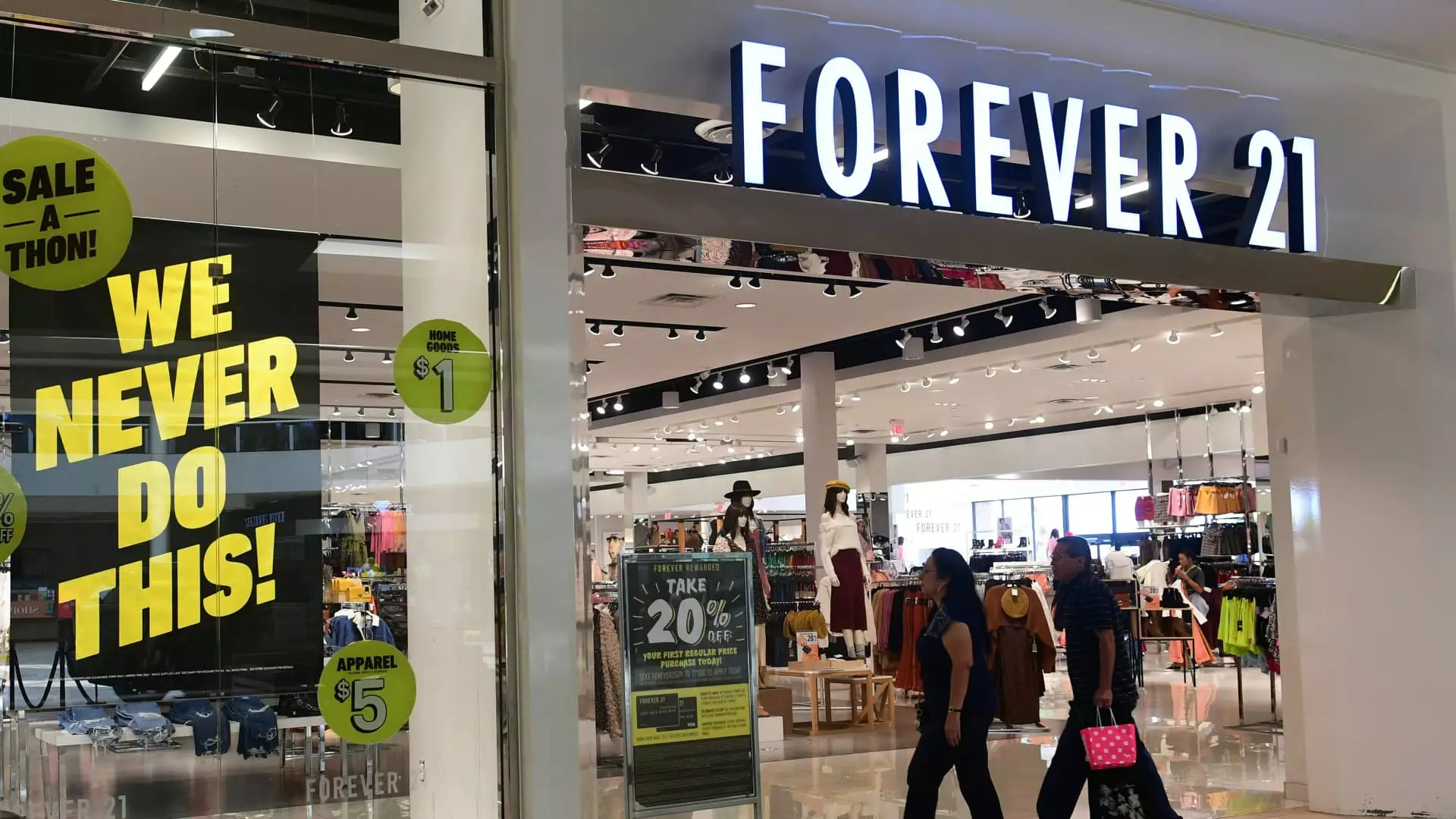Forever 21’s Uncertain Future: A Tale of Struggle in the Fast Fashion Arena

Once a leading name in the fast fashion industry, Forever 21 has recently found itself in turbulent waters, contemplating a second bankruptcy filing as talks intensify with liquidators about the retailer’s next moves. As insiders disclose the company’s ongoing struggle to identify a viable buyer for its U.S. leases and assets, the likelihood of an imminent bankruptcy is becoming increasingly palpable. The brand has been searching for strategic options since early January but has now opened discussions that hint at liquidation. This significant shift in focus raises concerns about its ability to recover from financial turmoil.
Forever 21 is not navigating these challenges in isolation; it is battling fierce competition from agile, online-only retailers like Shein and Temu. These players have redefined the fast fashion landscape with their innovative use of technology and artificial intelligence, allowing them to respond to consumer demands at exceptional speed. In contrast, Forever 21, which has historically relied on brick-and-mortar stores, is finding it increasingly difficult to keep pace. The retail sector’s evolution has left the brand lagging, and the loss of its former appeal among consumers has contributed to a shaky footing in a market characterized by rapid change.
Financial woes have plagued Forever 21 for years, and despite a restructuring effort following its first bankruptcy filed in 2019, the retailer has struggled with profitability, inventory management, and cost control. Reports suggest that the retailer has engaged with advisory firms in a bid to navigate its fiscal challenges, but the outcome remains uncertain. While initial discussions revolved around exploring possibilities with potential buyers, the pivot towards engaging with liquidators indicates a reduction in optimism regarding salvaging the brand’s creditors.
Authentic Brands Group currently controls Forever 21’s intellectual property (IP), a crucial asset that remains off the market. This layer of complexity means that any potential suitor might be deterred from pursuing a deal, considering that they wouldn’t acquire the brand’s core assets. This presents a bleak outlook for a company desperately seeking salvation.
The Role of Liquidation and Creditors
While the negotiations with liquidators provide an alternative route to recover funds and pay off creditors, it raises difficult questions about the brand’s legacy and future viability. Those familiar with the discussions suggest that liquidation could be the only feasible option should a suitable buyer not emerge in the immediate future. The prospect of liquidating stores raises concerns about the loss of jobs and further erosion of Forever 21’s once-vibrant presence in the retail market.
At the same time, there is potential for a complicated rebirth. The ownership structure involving Authentic Brands Group might allow for a phoenix-like revival in a different form, but the path to a successful rebranding is fraught with challenges. The retailer’s identity has been so interlaced with its past difficulties that rebuilding consumer trust and interest may be an uphill battle.
The Bigger Picture in Retail
Forever 21’s predicament is emblematic of broader trends in the retail sector, particularly around the disruptive nature of e-commerce. The parallels between Forever 21’s situation and the rise of Amazon decades ago are striking. Just as Amazon revolutionized shopping habits and led to the decline of many traditional retailers, the rise of nimble e-tailers like Shein and Temu is similarly driving a wave of bankruptcies and liquidations.
The speed and efficiency with which these online retailers operate are forcing legacy brands to rethink their strategies. Many are finding that the traditional retail model is insufficient to compete in a world where adaptability and technological integration are crucial. The landscape is evolving, and enduring players must find innovative approaches to survive.
The story of Forever 21 underscores the harsh realities of the retail industry — survival requires constant adaptation and an acute awareness of market trends and consumer preferences. While there is still a possibility for the retailer to find a buyer or negotiate a restructuring deal, the path forward remains fraught with uncertainty. As liquidation looms closer and competition intensifies, Forever 21 may soon find that its future depends not just on its ability to adapt but on the willingness of stakeholders to invest in its revival. Navigating these challenges will require bold strategies and perhaps a reinvented identity, but for now, the company stands at a crossroads, facing a daunting future.





